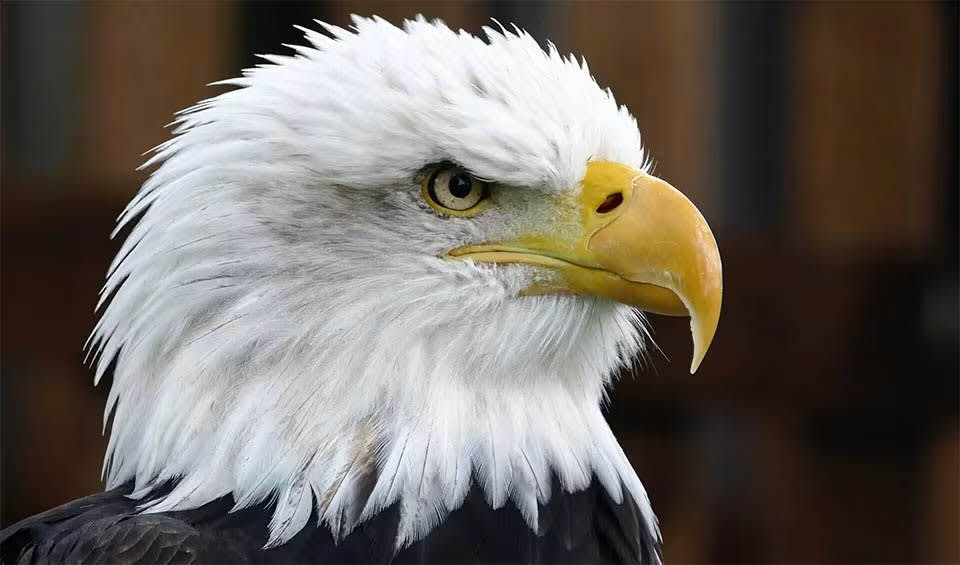A bird of grandeur and strength, it is widely recognized as a national symbol of the United States. With its expansive range across North America, the bald eagle is commonly associated with large bodies of water—such as lakes, rivers, and coastal regions—where it can find abundant food and nesting sites. The surrounding grasslands and marshes also provide a rich habitat for the diverse prey this eagle relies on.
Opportunistic in their foraging habits, bald eagles have a diet that predominantly consists of fish, which they expertly snatch from the water with their powerful talons. However, their varied diet can also include waterfowl, small mammals, and carrion. This adaptability in feeding has been crucial to the bald eagle’s survival, allowing it to thrive in a multitude of environments and conditions.
Bald eagles are monogamous and mate for life, a rare trait among many bird species. Their relationship is reinforced by elaborate courtship rituals and flight displays, which include high-flying acrobatics and talon-locking behavior. These displays not only serve to strengthen the pair bond but also to establish and defend their territory.
The nests of bald eagles, known as aeries, are architectural marvels. They are often the largest of any bird species in North America, reaching up to 6 feet in diameter and depth, and can weigh well over a ton. These nests are usually situated in large, sturdy trees that offer a clear view of the surrounding landscape and proximity to foraging areas. Bald eagles exhibit high site fidelity, often returning to the same nest year after year, adding new material with each breeding season.
With a potential lifespan of up to 50 years in the wild, bald eagles have ample time to establish their legacy within their chosen environment. However, the bald eagle has faced challenges in the past, including habitat destruction, hunting, and the effects of the pesticide DDT, which once brought them to the brink of extinction.
Distribution
 Belize
Belize Bermuda
Bermuda Canada
Canada Ireland
Ireland Mexico
Mexico Puerto Rico
Puerto Rico Russia
Russia Saint Pierre
Saint Pierre US Virgin Islands
US Virgin Islands United States
United StatesAnything we've missed?
Help us improve this page by suggesting edits. Glory never dies!
Suggest an editGet to know me
Terrestrial / Aquatic
Altricial / Precocial
Polygamous / Monogamous
Dimorphic (size) / Monomorphic
Active: Diurnal / Nocturnal
Social behavior: Solitary / Pack / Herd
Diet: Carnivore / Herbivore / Omnivore / Piscivorous / Insectivore
Migratory: Yes / No
Domesticated: Yes / No
Dangerous: Yes / No





